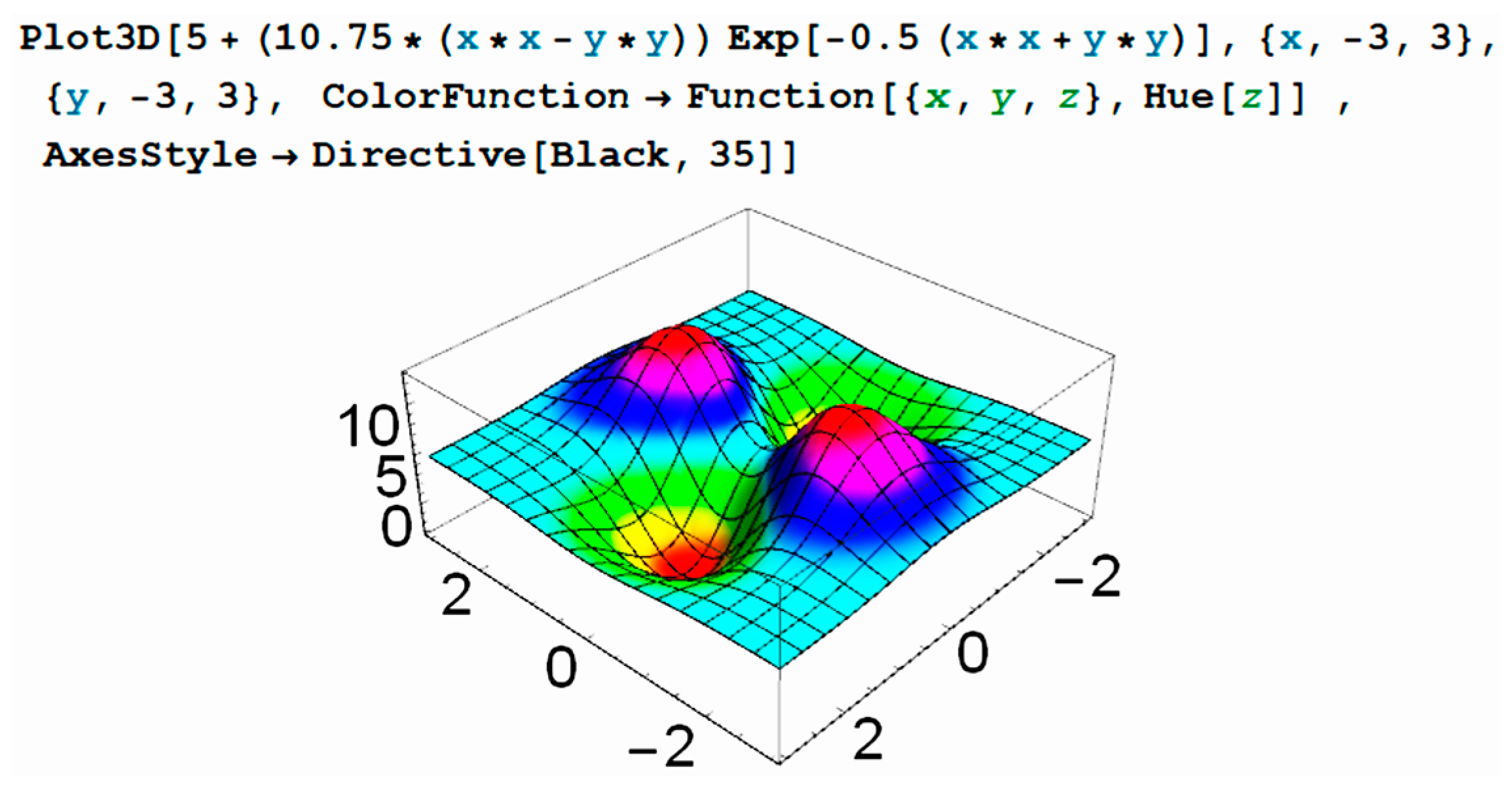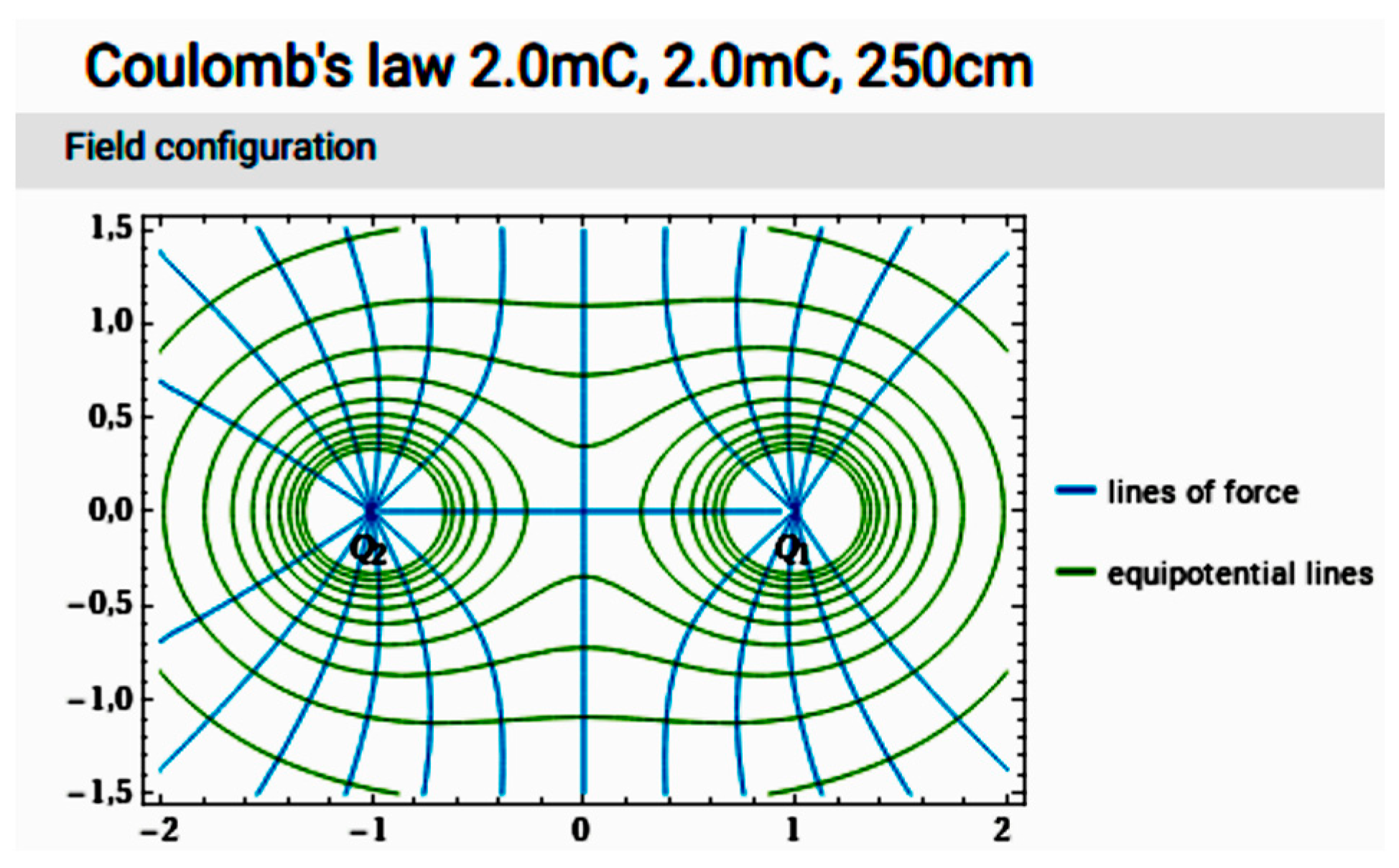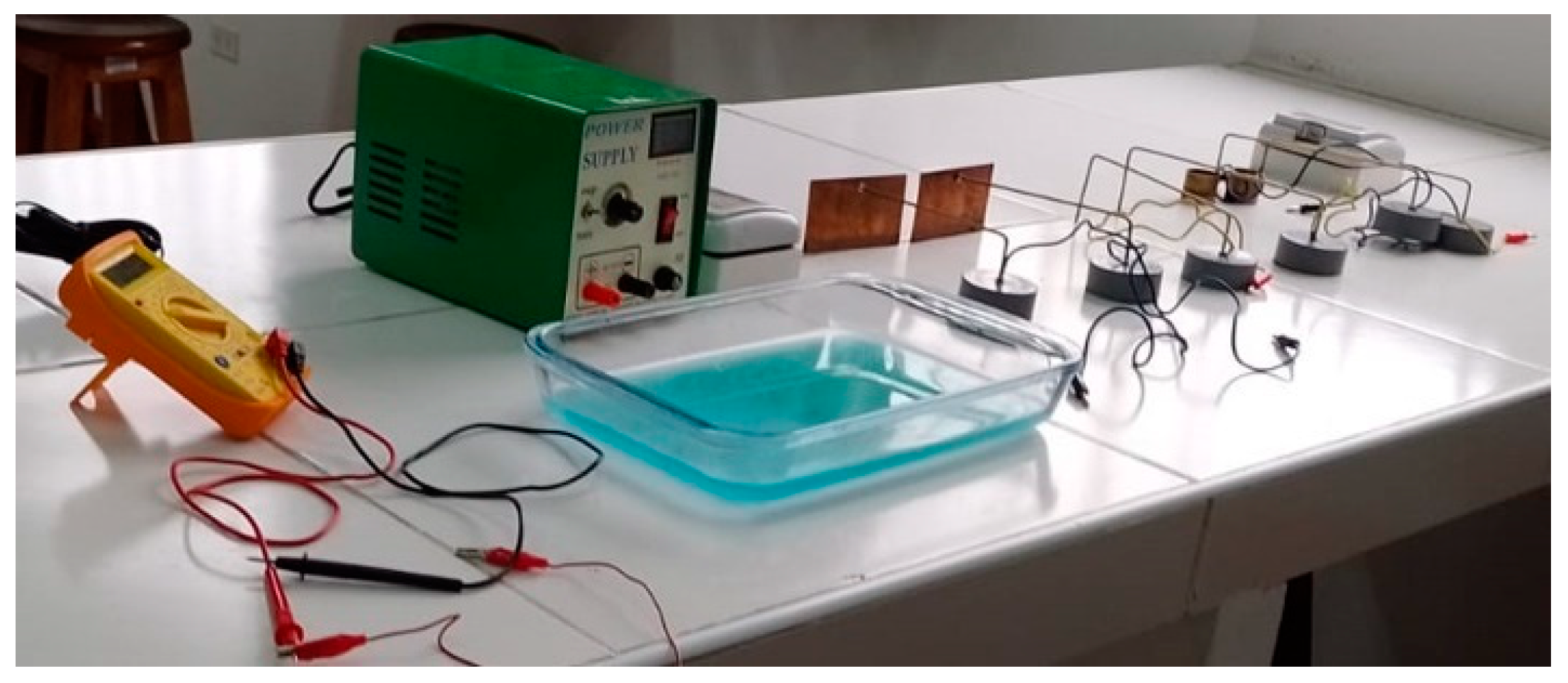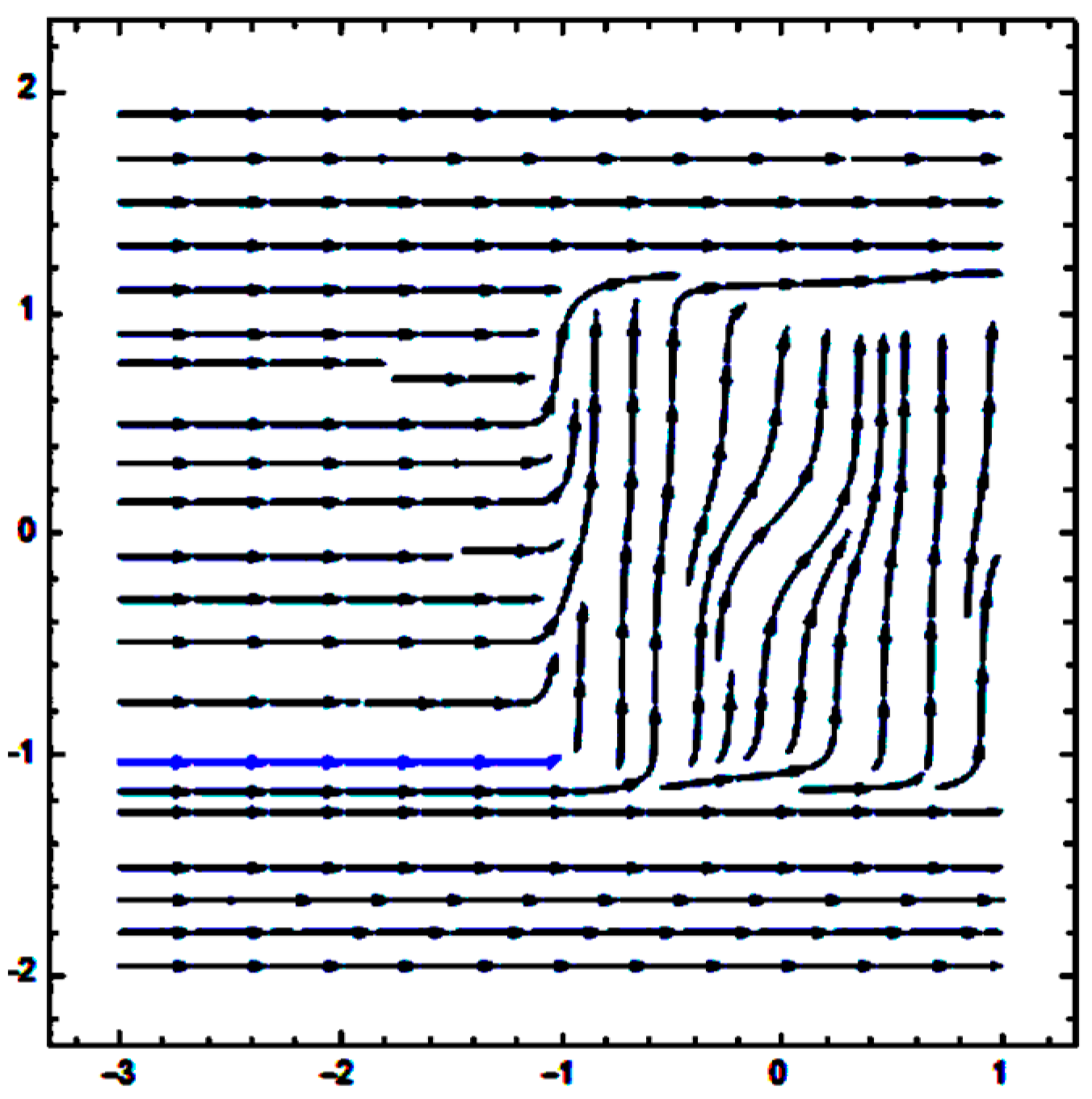Hybrid Courses Based on Basic Sciences and Green Technologies in Engineering Programs †
Abstract
:1. Introduction
- Searching for green batteries
- Green energy for massive applications
- Software to manage green energies
- Use of ongoing technologies in the green scenario
- The theory of equipotential lines
- The experience of lines of electric fields
- The usage of wasted potatoes
- The demonstration of Ohm law
- Presentation of scenarios in which the waste replaces electrical batteries.
2. Session of Physics
3. Usage of Potato Peels
4. Ohm Law and Proposal for Green Energy Circuit
5. Conclusions
Funding
Institutional Review Board Statement
Informed Consent Statement
Data Availability Statement
Conflicts of Interest
References
- Schoenung, A.J.M. Teaching green topics to chemical engineers: Innovation in the process design curriculum. In Proceedings of the 2009 IEEE International Symposium on Sustainable Systems and Technology, Tempe, AZ, USA, 18–20 May 2009; pp. 1–2. [Google Scholar]
- Duerden, S.; Doak, B.; Garland, J.; Green, M.; Roedel, R.; Williams, P.; McCarter, J. Scaling up Arizona State University’s first-year integrated program in engineering: Problems and solutions. Proceedings of Frontiers in Education 1997 27th Annual Conference. Teaching and Learning in an Era of Change, Pittsburgh, PA, USA, 5–8 November 1997; Volume 3, pp. 1442–1449. [Google Scholar]
- Hesketh, R.P.; Hollar, K.A.; Dericks, B.J. Incorporating green engineering in the chemical engineering curriculum. In Proceedings of the SMC’03 Conference Proceedings. 2003 IEEE International Conference on Systems, Man and Cybernetics. Conference Theme—System Security and Assurance (Cat. No.03CH37483), Washington, DC, USA, 8 October 2003; Volume 2, pp. 1745–1752. [Google Scholar]
- Manas, K.; Gupta, J.; Singh, B. Green Energy Based Multipurpose EVs Charging Station with Flexible DC Charging Functionality for Residential/Commercial Building Applications. In Proceedings of the 2022 IEEE Global Conference on Computing, Power and Communication Technologies (GlobConPT), New Delhi, India, 23–25 September 2022; pp. 1–6. [Google Scholar]
- Arsalis, A.; Papanastasiou, P.; Georghiou, G.E. Integration of a Green Hydrogen Subsystem in a Photovoltaic-Battery Nanogrid System. In Proceedings of the 2022 2nd International Conference on Energy Transition in the Mediterranean Area (SyNERGY MED), Thessaloniki, Greece, 17–19 October 2022; pp. 1–5. [Google Scholar]
- Kattayat, S.; Josey, S. Implementation of digital platform in teaching physics concepts applied to engineering education and student’s performance: An exploratory study. In Proceedings of the 2018 Advances in Science and Engineering Technology International Conferences (ASET), Dubai, Sharjah, Abu Dhabi, United Arab Emirates, 6 February–5 April 2018; pp. 1–5. [Google Scholar]
- Srinivasa, A.; Bassichis, W.H. Work in Progress: The Role of Physics in an Engineering Education. In Proceedings of the Frontiers in Education: 36th Annual Conference, San Diego, CA, USA, 27–31 October 2006; pp. 27–28. [Google Scholar]
- Tan, S.; Xu, C.; Huo, J.; Wang, X. The remote education assistant system for the virtual physics experiment teaching system. In Proceedings of the 2009 4th International Conference on Computer Science & Education, Nanning, China, 25–28 July 2009; pp. 1451–1454. [Google Scholar]
- SenthilKumar, R. Work in Progress: Use of Interactive Simulations in the Active Learning Model in Physics Education for Engineering Students at a College in Oman. In Proceedings of the 2019 IEEE Global Engineering Education Conference (EDUCON), Dubai, United Arab Emirates, 8–11 April 2019; pp. 1359–1362. [Google Scholar]
- Larkin-Hein, T. The write touch in physics and engineering education. In Proceedings of the 31st Annual Frontiers in Education Conference. Impact on Engineering and Science Education. Conference Proceedings (Cat. No.01CH37193), Reno, NV, USA, 10–13 October 2001; Volume 3, pp. S3F–S31. [Google Scholar]
- Serway, R.A. Physics for Scientists & Engineers with Modern Physics; Saunders College Pub.: Philadelphia, PA, USA, 2005. [Google Scholar]
- Physics, U. Vol-1 Sanny, Loyola Marymount University Samuel Ling; Truman State University: Kirksville, MO, USA, 2016. [Google Scholar]
- Griffiths, D.J. (Ed.) Introduction to Electrodynamics; Prentice Hall: Hoboken, NJ, USA, 1999. [Google Scholar]
- Klug, M.; Hausberger, P. Motivaton of students for further education in simulation by an applied example in a related other course in engineering education—A case study. In Proceedings of the 2009 Winter Simulation Conference (WSC), Austin, TX, USA, 13–16 December 2009; pp. 248–255. [Google Scholar]
- Todorova, S. Using Simulation as an Experiential Learning Tool for Enhancing Students Learning in Environmental Engineering. In Proceedings of the 2019 IEEE Global Engineering Education Conference (EDUCON), Dubai, United Arab Emirates, 8–11 April 2019; pp. 1384–1385. [Google Scholar]
- Van Til, R.; Banachowski, M.; Wagner, C.; Sengupta, S.; Hillberg, P. Using a discrete event simulation program in an engineering probability and statistics course. In Proceedings of the 2009 39th IEEE Frontiers in Education Conference, San Antonio, TX, USA, 18–21 October 2009; pp. 1–5. [Google Scholar]
- Available online: https://www.wolframalpha.com/input?i=Coulomb%27s+law+2.0mC%2C+2.0mC%2C+250cm&lang=es (accessed on 1 April 2023).
- Núñez-Delgado, A.; Dominguez, J.R.; Zhou, Y.; Race, M. New trends on green energy and environmental technologies, with special focus on biomass valorization, water and waste recycling: Editorial of the special issue. J. Environ. Manag. 2022, 316, 115209. [Google Scholar] [CrossRef] [PubMed]
- Wang, Z.; Chen, H.; Xia, R.; Han, F.; Ji, Y.; Cai, W. Energy, exergy and economy (3E) investigation of a SOFC-GT-ORC waste heat recovery system for green power ships. Therm. Sci. Eng. Prog. 2022, 32, 101342. [Google Scholar] [CrossRef]
- Dafiqurrohman, H.; Safitri, K.A.; Setyawan, M.I.B.; Surjosatyo, A.; Aziz, M. Gasification of rice wastes toward green and sustainable energy production: A review. J. Clean. Prod. 2022, 366, 132926. [Google Scholar] [CrossRef]
- Elmoursi, A.A.; Castle, G.S.P. Mapping of field lines and equipotential contours in electric field problems using the charge-simulation technique. J. Electrost. 1987, 19, 221–234. [Google Scholar] [CrossRef]
- Available online: https://www.pasco.com/resources/lab-experiments.
- Nieto-Chaupis, H. Experiences on the quality of education assessment in a network engineering program in Lima city. In Proceedings of the 2017 IEEE URUCON, Montevideo, Uruguay, 23–25 October 2017; pp. 1–4. [Google Scholar]
- Rubiano, S.M.M.; López-Cruz, O.; Soto, E.G. Teaching computer programming: Practices, difficulties and opportunities. In Proceedings of the 2015 IEEE Frontiers in Education Conference (FIE), El Paso, TX, USA, 21–24 October 2015; pp. 1–9. [Google Scholar] [CrossRef]
- Palacios, C.A.; Reyes-Suárez, J.A.; Bearzotti, L.A.; Leiva, V.; Marchant, C. Knowledge Discovery for Higher Education Student Retention Based on Data Mining: Machine Learning Algorithms and Case Study in Chile. Entropy 2021, 23, 485. [Google Scholar] [CrossRef] [PubMed]







| Variable | Impact | In Campus | Outside Campus |
|---|---|---|---|
| Communication | Middle | Yes | Yes |
| Workshop | Middle | Yes | No |
| Review of literature | High | Yes | Probable |
| Sociability | High | High | High |
Disclaimer/Publisher’s Note: The statements, opinions and data contained in all publications are solely those of the individual author(s) and contributor(s) and not of MDPI and/or the editor(s). MDPI and/or the editor(s) disclaim responsibility for any injury to people or property resulting from any ideas, methods, instructions or products referred to in the content. |
© 2023 by the author. Licensee MDPI, Basel, Switzerland. This article is an open access article distributed under the terms and conditions of the Creative Commons Attribution (CC BY) license (https://creativecommons.org/licenses/by/4.0/).
Share and Cite
Nieto-Chaupis, H. Hybrid Courses Based on Basic Sciences and Green Technologies in Engineering Programs. Eng. Proc. 2023, 38, 49. https://doi.org/10.3390/engproc2023038049
Nieto-Chaupis H. Hybrid Courses Based on Basic Sciences and Green Technologies in Engineering Programs. Engineering Proceedings. 2023; 38(1):49. https://doi.org/10.3390/engproc2023038049
Chicago/Turabian StyleNieto-Chaupis, Huber. 2023. "Hybrid Courses Based on Basic Sciences and Green Technologies in Engineering Programs" Engineering Proceedings 38, no. 1: 49. https://doi.org/10.3390/engproc2023038049
APA StyleNieto-Chaupis, H. (2023). Hybrid Courses Based on Basic Sciences and Green Technologies in Engineering Programs. Engineering Proceedings, 38(1), 49. https://doi.org/10.3390/engproc2023038049






